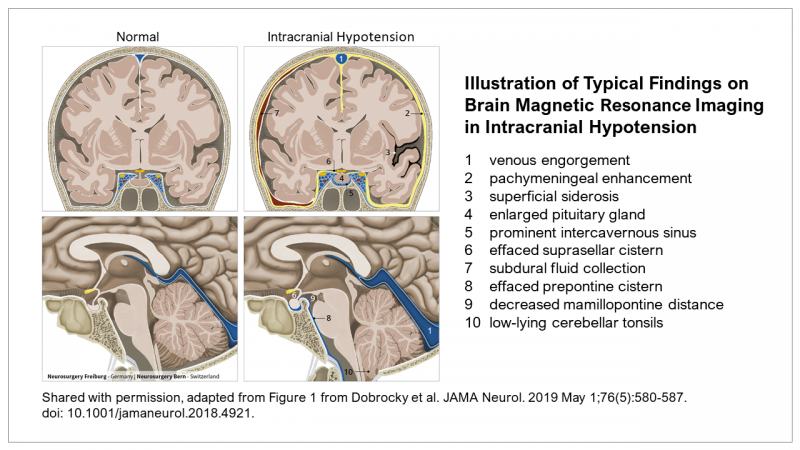Intracranial hypotension (low cerebrospinal fluid volume and pressure) from a spinal CSF leak is increasingly recognized as a cause of subdural fluid or blood collections such as subdural hygromas (a collection of fluid in subdural space) and subdural hematomas (collection of blood in subdural space).
The subdural space is just under the dura mater layer of the meninges, the connective tissue that surrounds the brain and spinal cord. Subdural hygromas and hematomas can be seen on brain MRI. Often, while subdural hematomas may require surgical evacuation, in stable patients, these usually resolve with treatment of the underlying spinal CSF leak.

One of the most common findings on gadolinium-enhanced brain MRI is termed “pachymeningeal enhancement.” When comparing the non-enhanced images with the enhanced images, the meninges appear more enhanced than usual.
With or without brain MRI evidence of meningeal enhancements, patients often experience symptoms associated with irritation of the meninges. These symptoms—which are also seen with meningitis or with subarachnoid hemorrhage (type of brain bleed), and are often considered as possible diagnoses when symptoms first develop—include headache, neck stiffness or pain, photophobia (sensitivity to light), nausea without or with vomiting, and phonophobia (sensitivity to noise).
